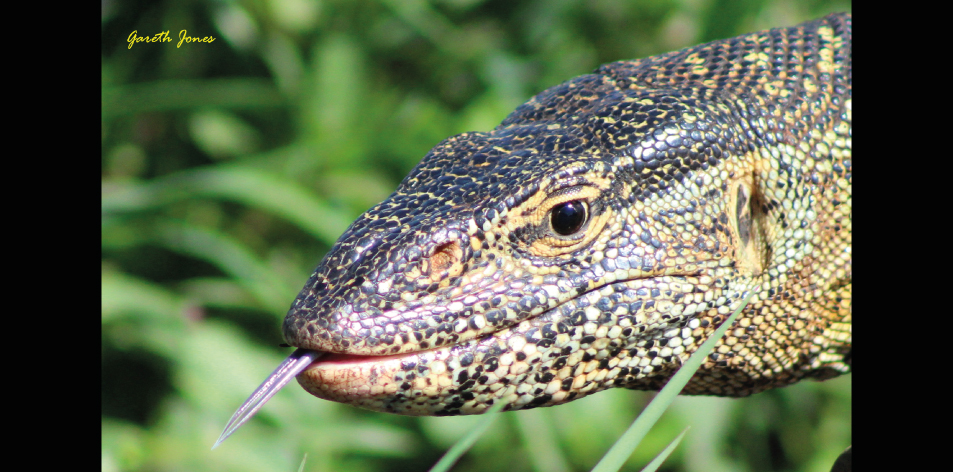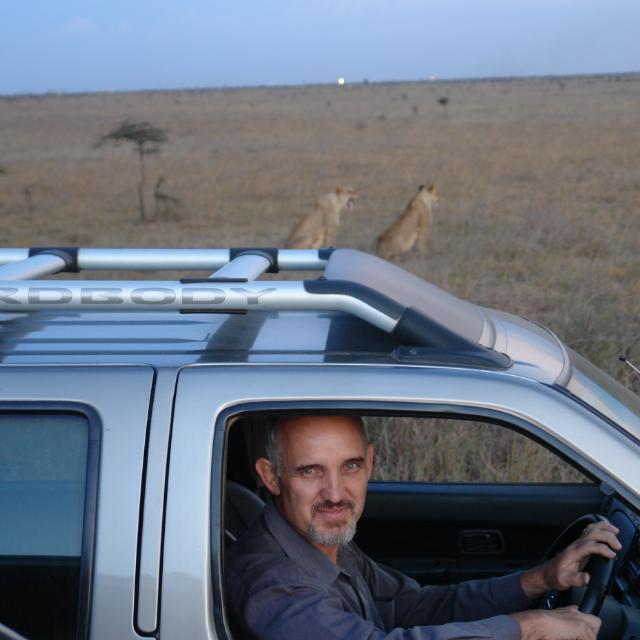
Some Reptile Stories! – Article by Gareth Jones
NAIROBI NATIONAL PARK – SOME REPTILE STORIES!! – By GARETH JONES
The Nile Monitor
After a cold day, the sun finally came out giving some warmth. I drove down towards the Hyena dam, and I saw a fairly large monitor lizard, sunning itself on the side of the dam. It lay perfectly still, looking relaxed. I switched off my engine and watched for a while.
The monitor turned its head slowly and looked around, with its tongue flickering in and out. The lizard had interesting markings and I guessed it was about five feet long. After a while, it must have determined that I was not a threat, as it moved away into the reeds. Wow! it is not every day that you see such a sighting. Although monitor lizards are present in the park, they are not often seen. They prefer to frequent aquatic areas like rivers and dams with plenty of bush and reed cover.
Recently we also observed some interesting behaviour when a water monitor suddenly became visible next to the Athi dam. The water monitor was clearly hunting along the shores of the dam looking for bird eggs or young chicks. A crowned lapwing moved rapidly directly into the path of the water monitor lizard and pretended to have a broken wing as it frantically flapped its one wing while at the same time letting the other wing hang limp to the ground. This behaviour is known as the “broken wing”, is typical when such birds see a predator and they sense that their eggs or young are threatened, so the action is to deliberately lead the predator away from the eggs or young birds. The species of monitor found in Kenya and many parts of Africa is called the Nile Monitor (Varanus niloticus).
Nile monitors feed on fish, snails, frogs, crocodile eggs and young snakes, birds, small mammals, large insects and carrion. To me, their most fascinating and amazing feature is their extra sense of smell. To do this they use their long forked tongue, and the reason it flickers in and out is so that the Lizard can “smell” the air. Monitor lizards, like snakes, have a pair of sensory organs located above the roof of the mouth called the Jacobson’s organs. The organs are used to detect scent particles within the air. These lizards continuously flick their forked tongues to collect these particles and to ‘taste’ the air; this extra sense is used mainly for hunting as monitor lizards are very active predators and are almost constantly foraging around for food. During the breeding season, it is also used to help these usually solitary reptiles find a mate; the male will use his tongue to follow the scent of a female.
Nile (water) monitors also have incredibly powerful tails that they also use when hunting prey to
strike. Large specimens have even broken the limbs of people who venture too close. Watch out
for these fascinating reptiles next time you visit the Nairobi park!
Chameleon Colour Combinations
In the late afternoon, I was driving slowly down the tar road near the main dam at No2 junction, looking carefully to see if any suni were hiding under the dense bushes when suddenly I noticed the profile of the small creature on the road. I immediately knew it was a chameleon, and quickly switched off my engine to allow it to cross the tar road at its slow pace. I was naturally concerned that another vehicle would come before the “epic” crossing. It was interesting to note that the chameleon did a very good job; all colour matching itself to be dark grey of the tar except for some green on its mid-body. After what seemed like ages, the chameleon eventually arrived on the other side of the road.
Once it was off the tar road and climbing a nearby shrub, its body colour rapidly changed to blend with the green bushy surroundings, indeed making it difficult to find if a person did not know where to look. A particularly interesting and unusual feature of this particular type is the three horns on its head, hence they are known as Jackson’s (three-horned) chameleon. Generally, it is the males that have horns. This species is found predominantly on the cool high lands in Kenya & Tanzania. The female gives birth to 8-30 live offsprings after a 5-6 month gestation. They eat a diet of small insects and play a role in reducing flies.
This was my first sighting of Jackson’s chameleon inside the Nairobi National Park. Watch out for these reptiles next time you visit the Nairobi park.
Hopefully, many of you will be able to tell your own stories as you encounter more of the wonderful creatures we call reptiles. Take care!!!
The park is open daily from 06h00 to 19h00.
Gallery


